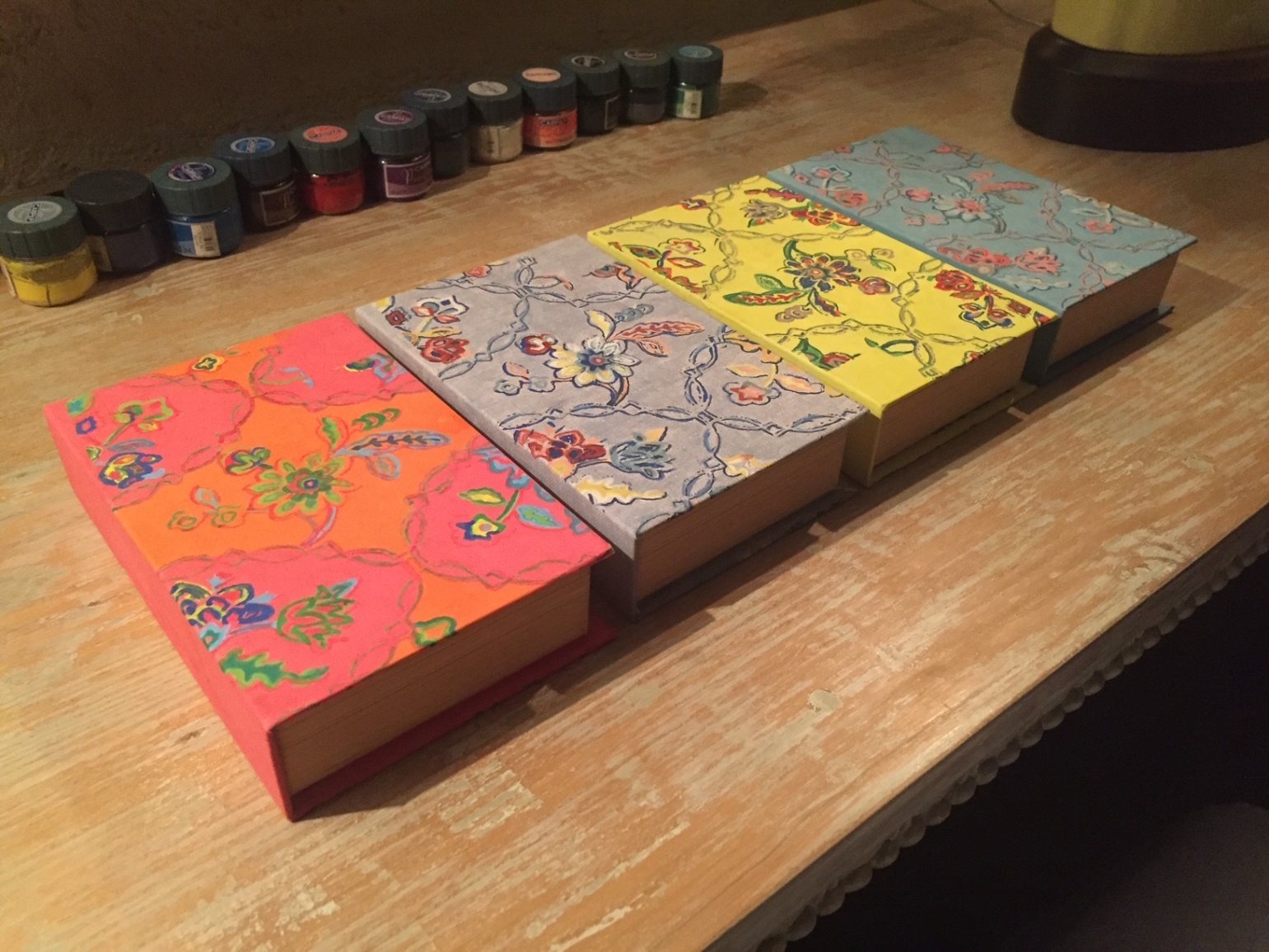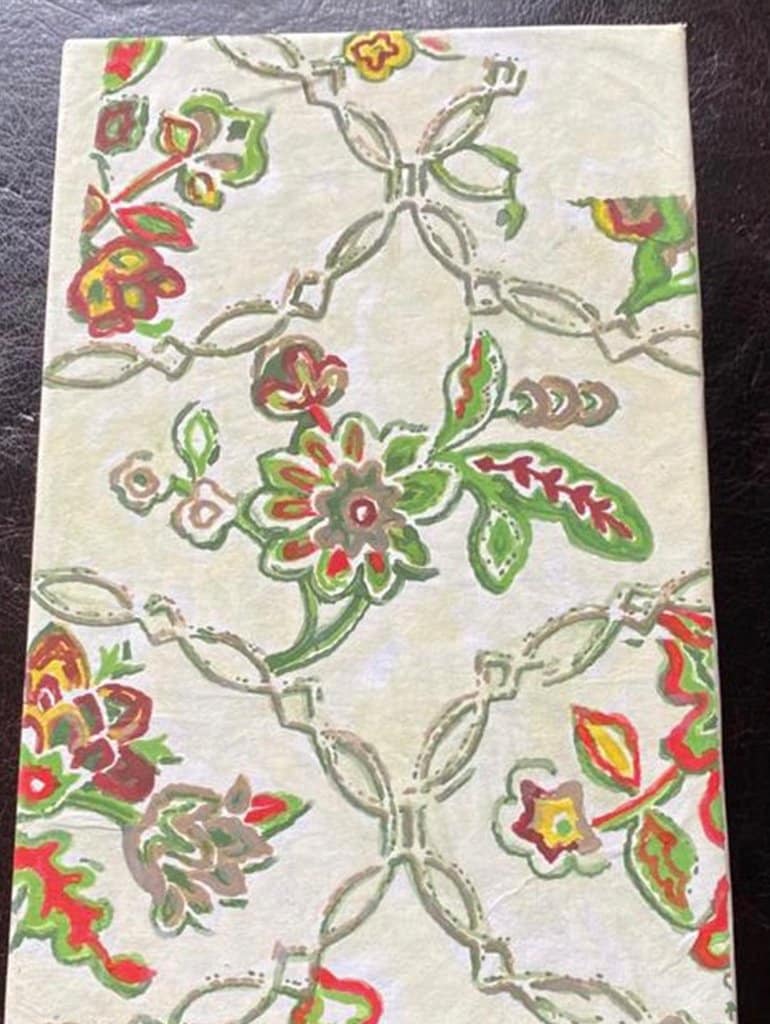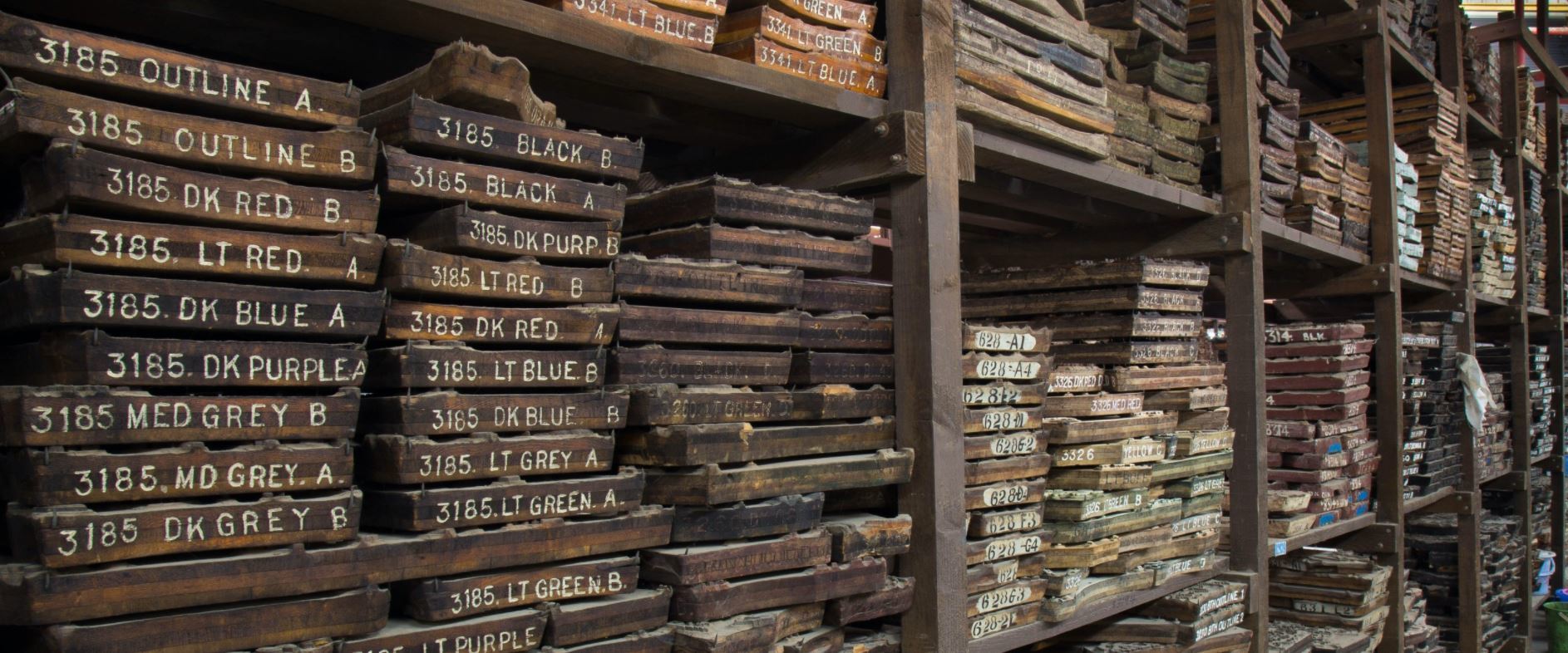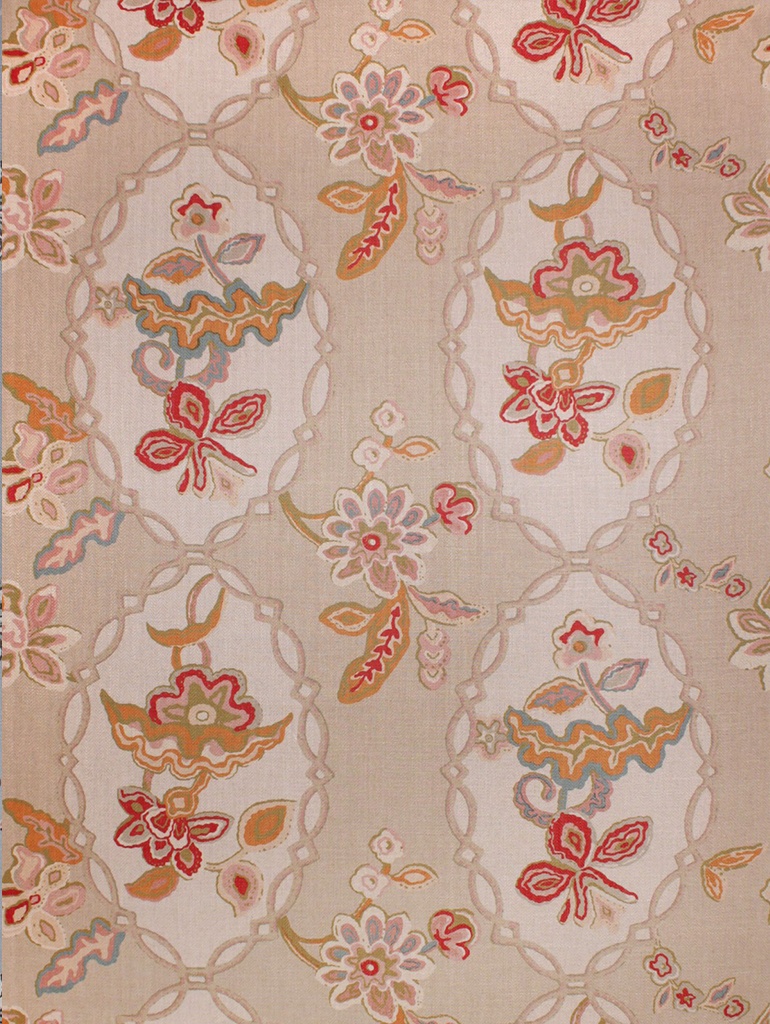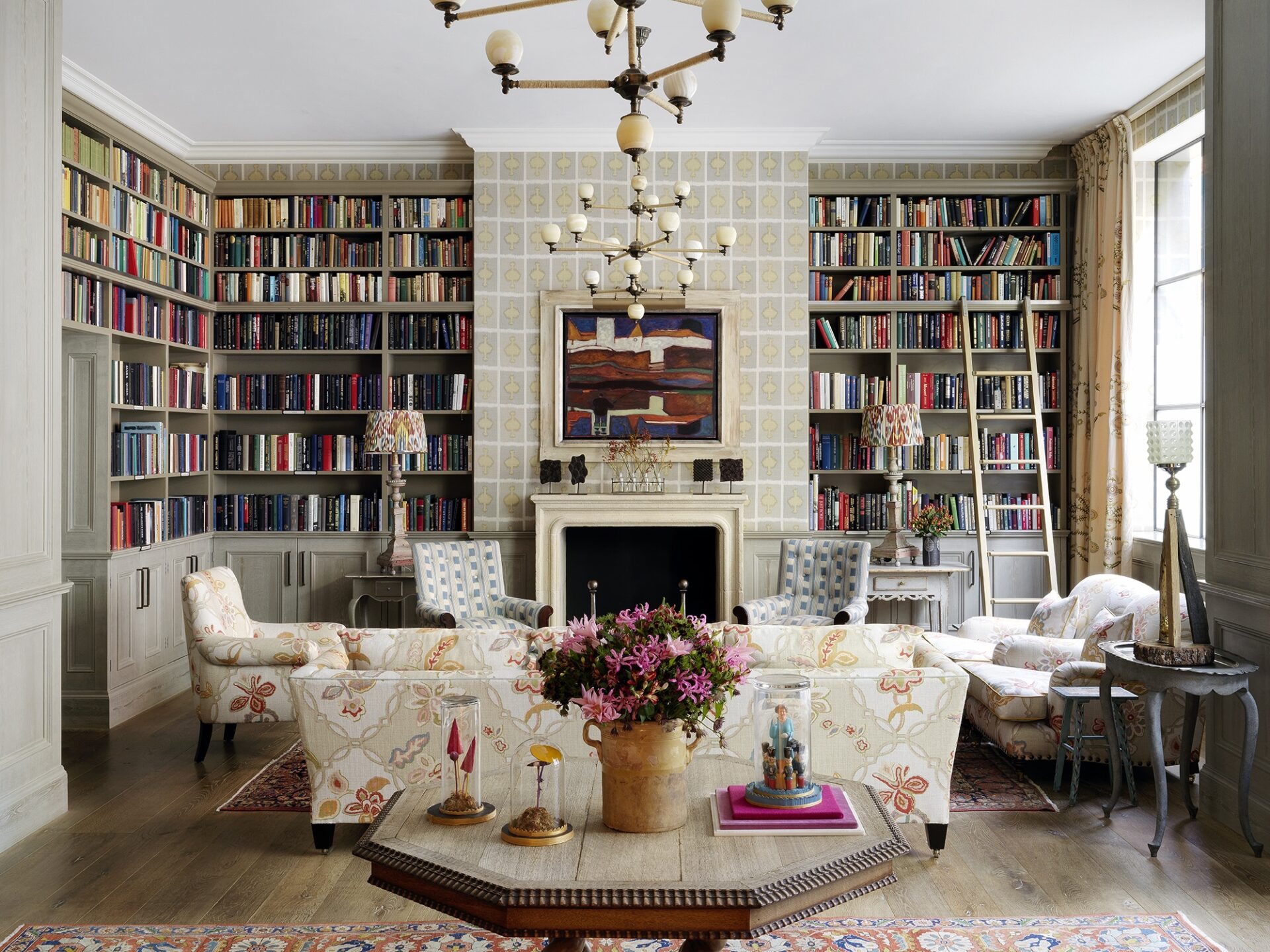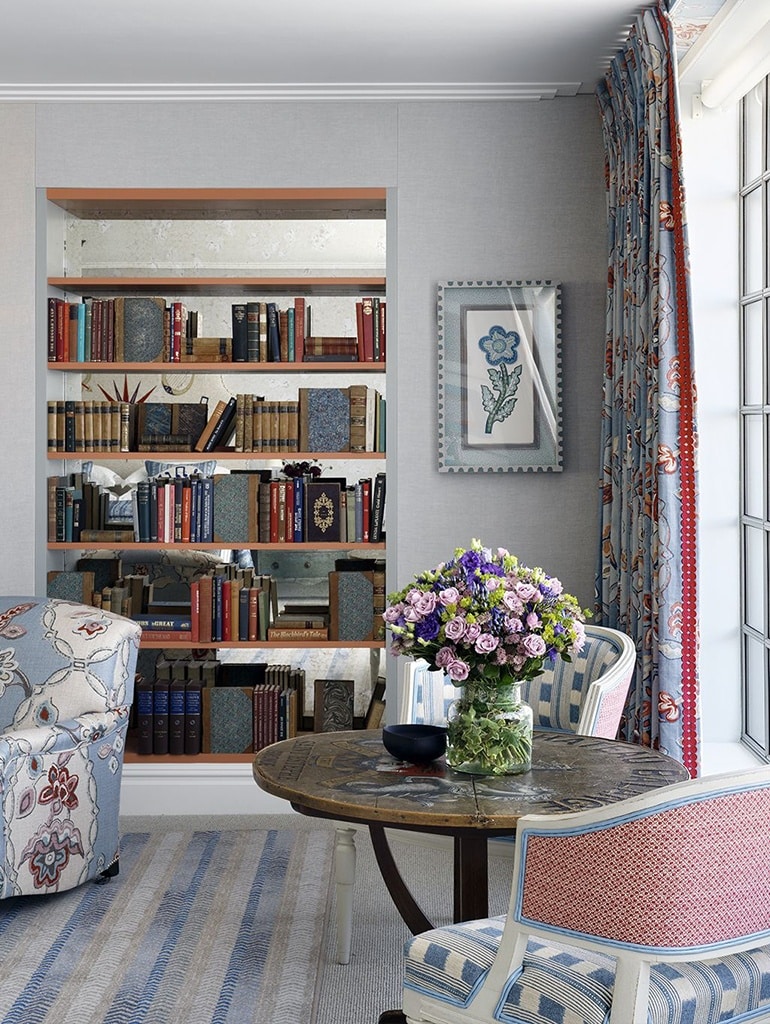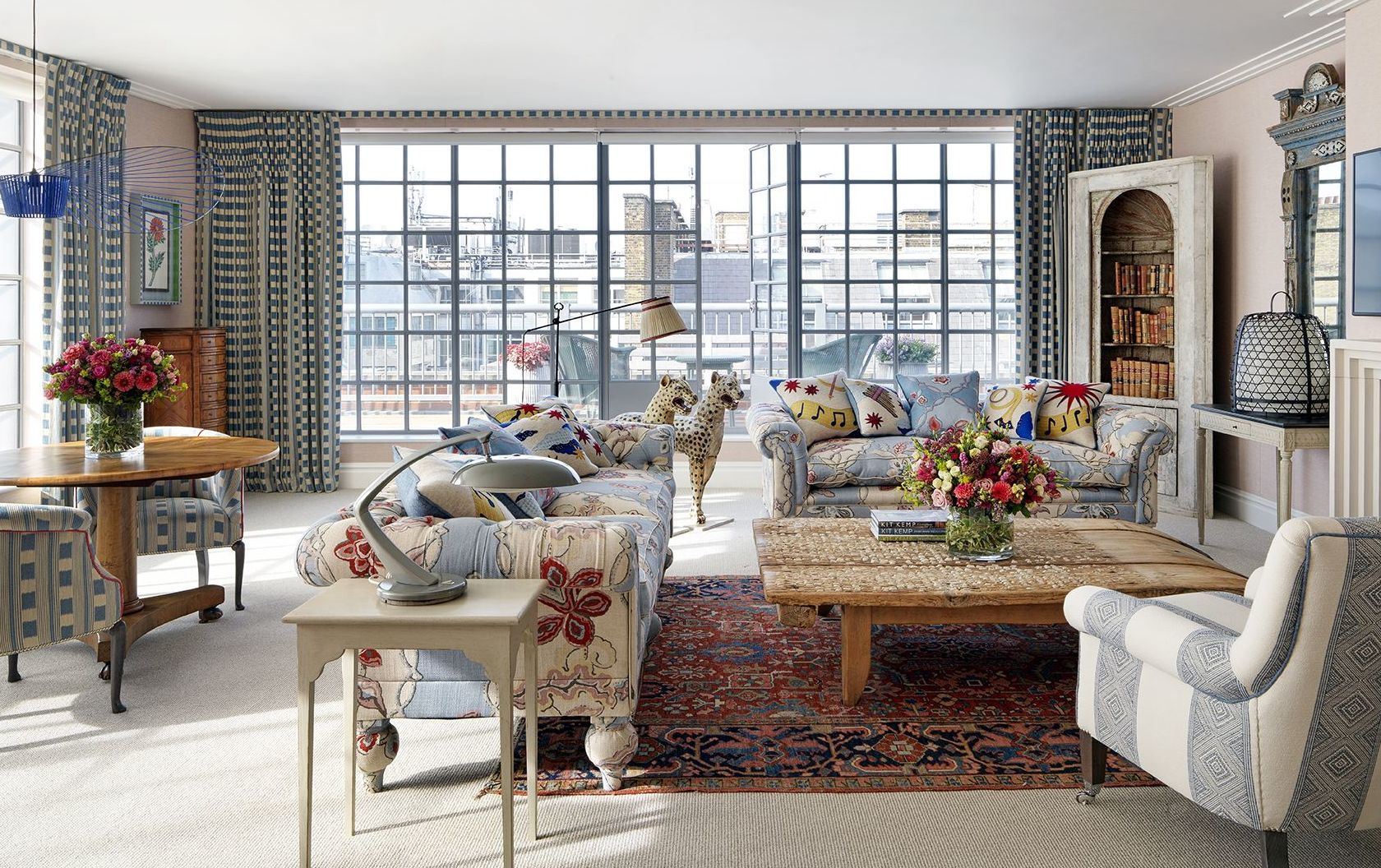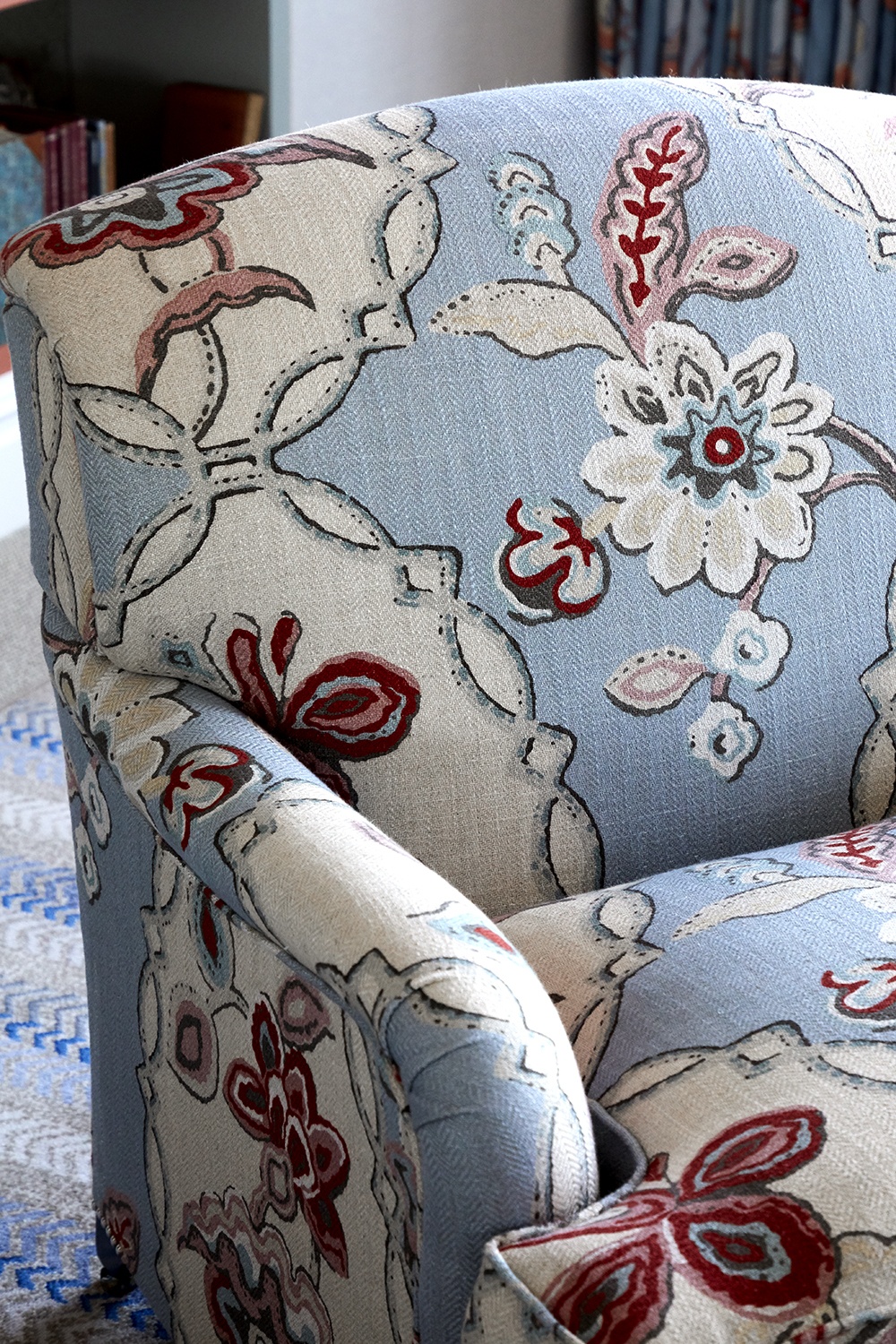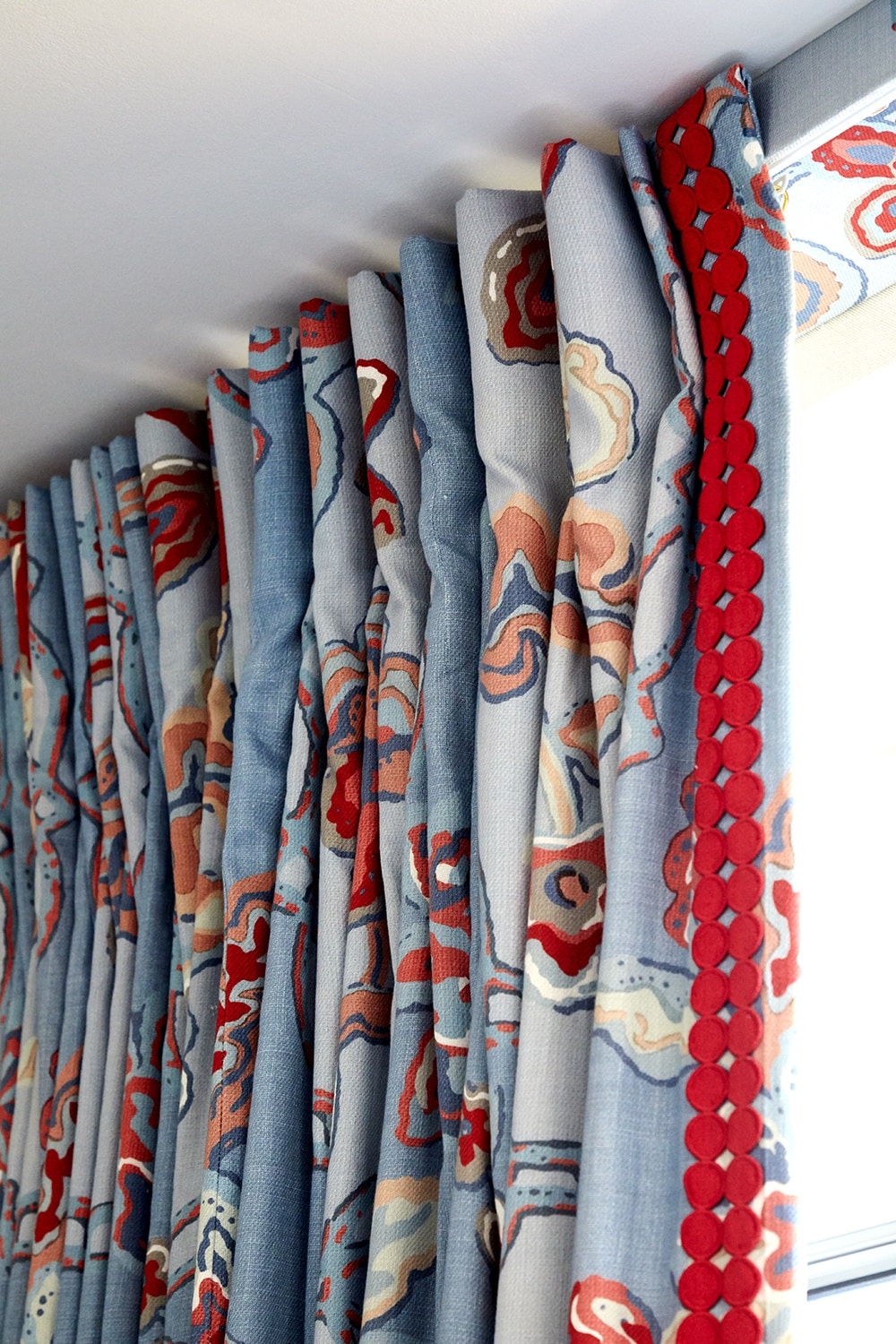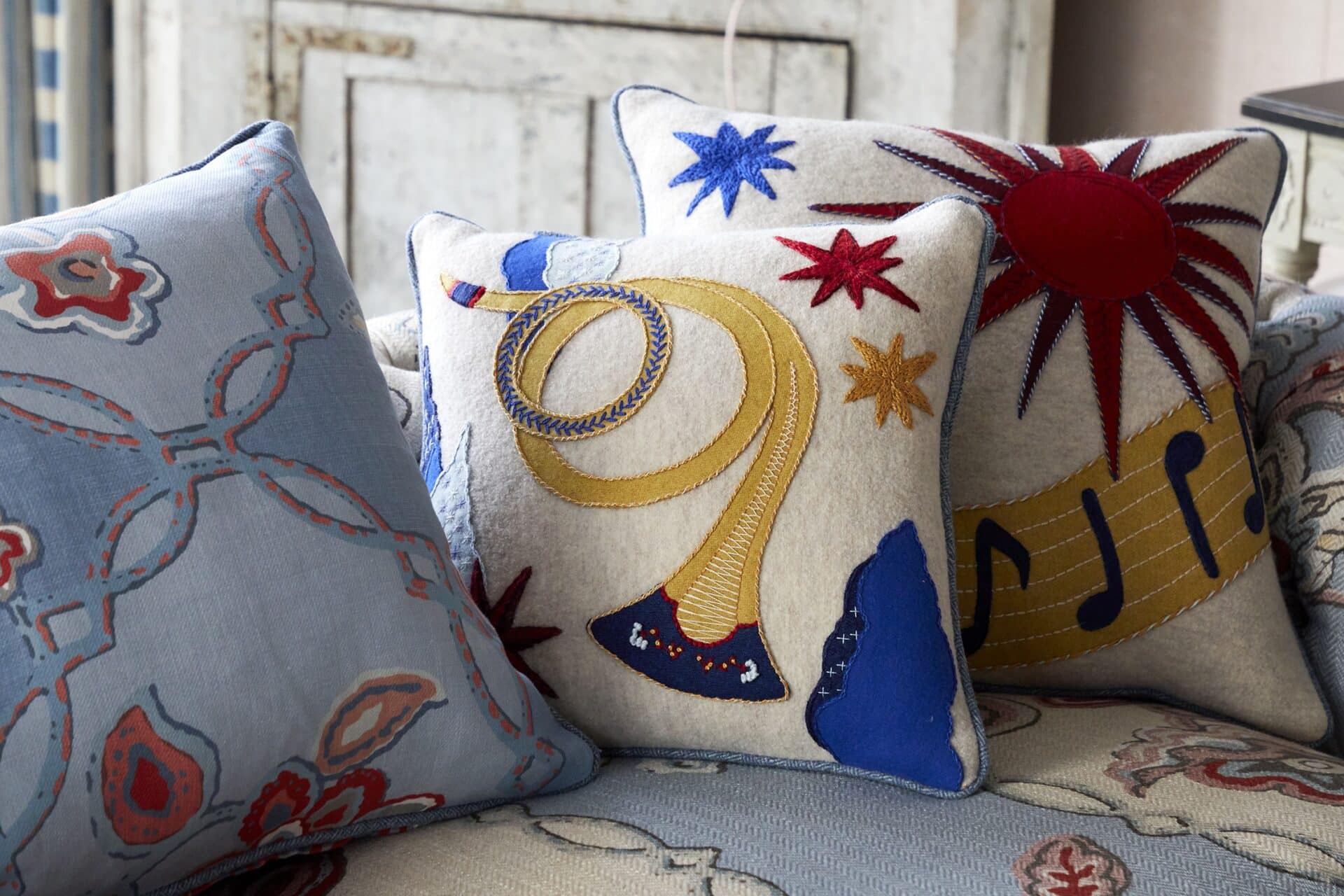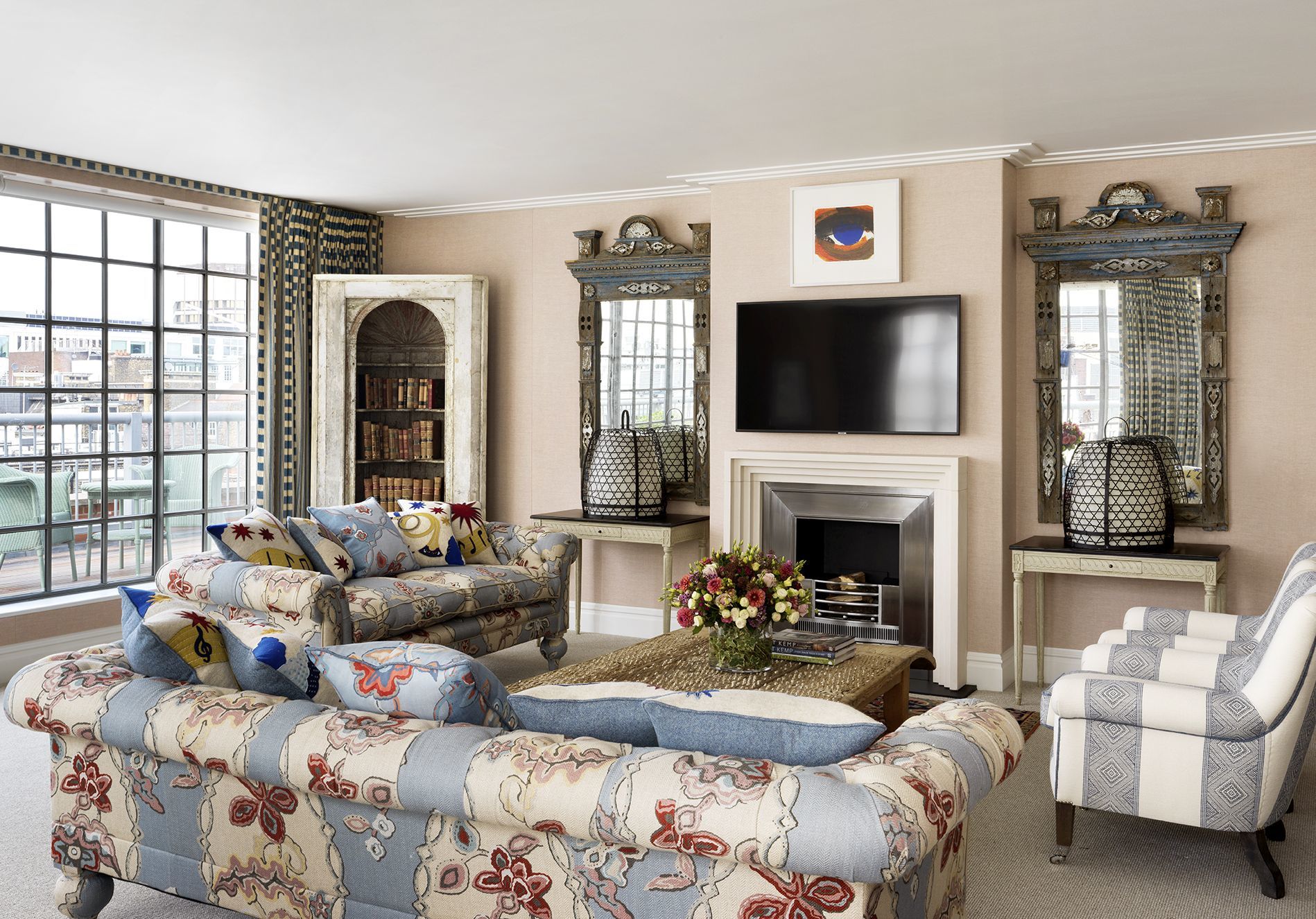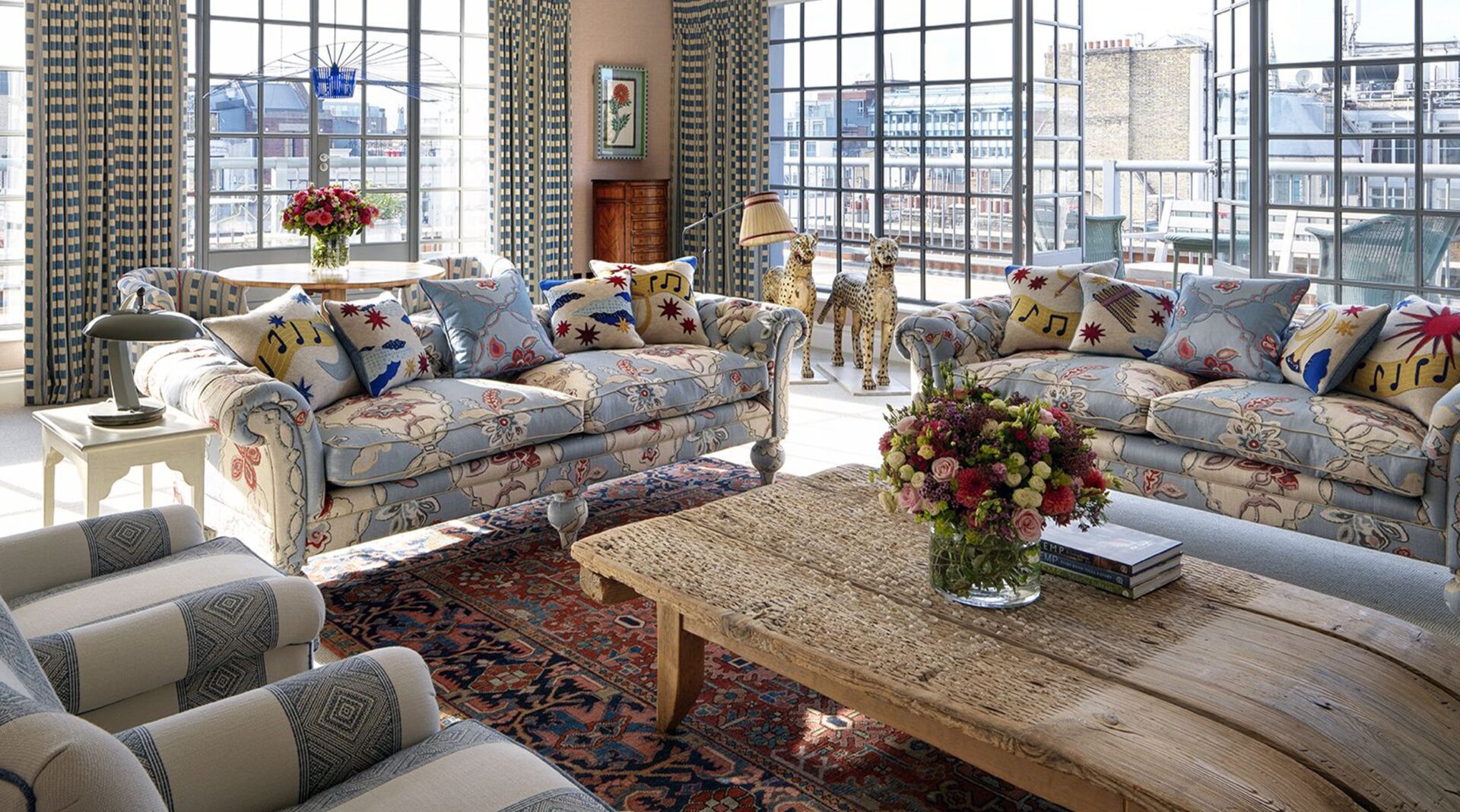
Chainstitch
Day to DayWe always get excited when Simeon Turnbull from Rosebank Fabrics visits us in the design studio, a suitcase or two laden with fabrics new and old. When Simeon brought in a fabric called Chainstitch, I could see that the very large block print repeat from the 1920s, with its interlocking lozenges and botanical details had so much potential, if we could change the muddy dark purple and aubergine colours...
We always get excited when Simeon Turnbull from Rosebank Fabrics visits us in the design studio, a suitcase or two laden with fabrics new and old. There isn’t anything Simeon doesn’t know about the textile industry and we have spent many an hour going through the design archives, sometimes just for pleasure and inspiration and sometimes to breathe new life into a traditional design.
When Simeon brought in a fabric called Chainstitch, I could see that the very large block print repeat from the 1920s, with its interlocking lozenges and botanical details had so much potential, if we could change the muddy dark purple and aubergine colours. This wonderful, generously scaled design stayed in my mind and for Christmas I found some soap boxes that appear to be hard back books. I painted five very different potential Chainstitch colourways on each box. We have a more natural colourway on a neutral background; a fresh one on a textured denim type background; another unusual and romantic one on a blue, and then for the most boisterous of the family, we have Chainstitch on acid.
By hand painting each of the boxes, I had time to think about which colours complement each other and the composition as a whole. It was a very different feeling compared to manipulating on the computer, which I often use as a tool. When choosing which colour goes where, I had to think about the block printing process.
I gave images of the painted boxes to Simeon, who took the traditional hand blocked design and printed samples in the colourways using more modern methods. He uses vat dye rather than reactive dye to create depth and to ensure the colours won’t fade in bright light. Simeon compares the two processes with developing a photograph in a traditional studio, or just printing a picture taken from your phone. It was important to me that we achieved the depth and intensity of colour. We also experimented with printing on linen and then on a stronger very durable double cloth weight.
The design was once carved into wooden blocks and transferred onto fabric in multiple layers of colour. The blocks allow the dyes to be layered, creating a depth of colour that machine printing cannot replicate. Of course, the beauty of this printing technique lies in its imperfections.
The test of truth is always putting in practice what we have created in the studio. We have used the natural oatmeal ‘Edenwood’ colourway on the sofa and chairs in the Library at Ham Yard Hotel (named after one of my dog walking spots in the New Forest).
Just by printing on different grounds makes the design take on a new dimension.
You can see the two different versions of the blue ‘Kings Hat’ colourway in the Terrace Suite at The Soho Hotel.
These images show the same design and colours printed on linen for the curtains and cushions.
The heavier weight base cloth is on the sofa.
You can now order the fabric through Hazelton House here. Watch this space for the acid colourways which are coming soon!

